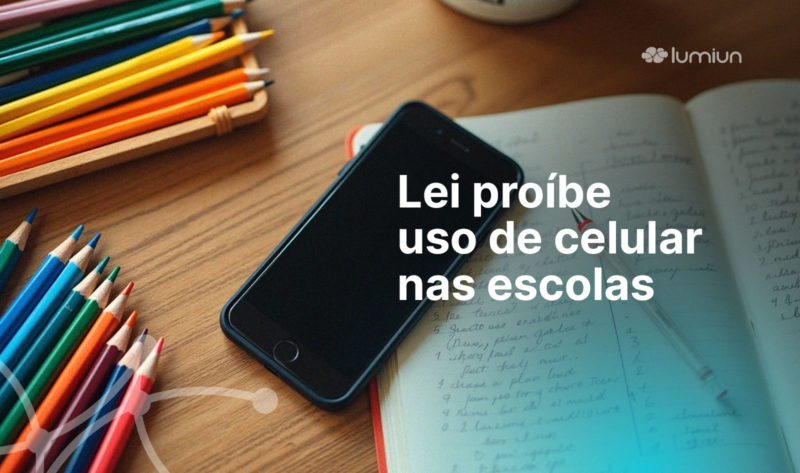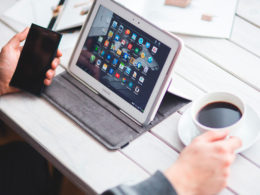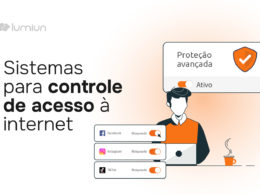The recent sanction of the law that limits the use of cell phones and other electronic devices in public and private schools in Brazil has brought a series of challenges and opportunities for educational institutions. The measure, which applies to basic education (preschool, elementary and high school), seeks to balance the digital formation of students with a more focused and interactive environment.
In this article, we explain the main changes of the new cell phone use law in school and show how institutions can use technological solutions to ensure compliance with the rules and optimize the school environment.
What does the new law determine?
The law sanctioned by President Luiz Inacio Lula da Silva prohibits the use of cell phones during classes, intervals, recrees and extracurricular activities. The use of devices will only be allowed in specific situations, such as:
- Pedagogical or didactic activities , under the guidance of the teacher.
- Assurance of accessibility and inclusion of students with specific needs.
- Emergencies , such as health problems or state of necessity.
The law shall enter into force from the date of publication, January 13, and must be regulated within 30 days. At the beginning of the school year of 2025, there will be a gradual implementation schedule, including the creation of guidelines and guidelines by the Ministry of Education (MEC).
In the coming days, the inspection and punishment criteria will be established for schools that fail to comply with the norm.
Why was the law created?
The main justification is to protect the mental and physical health of children and adolescents, as well as improving academic performance. Pisa 2022 report data show that:
- Students who spend more than five hours of connected daily had on average 49 points less in mathematics than those who use devices for up to an hour.
- In Brazil, 80% of students reported distractions during classes , against 18% in Japan and 32% in South Korea.
In addition, excessive consumption of social networks is associated with anxiety disorders, depression and other mental health problems. According to UNESCO's global education monitoring report , one in four countries in the world already prohibits the use of cell phones in schools. In the list are France, pioneer on the theme, Spain, Greece, Finland, Switzerland and Mexico.
Challenges for schools
The implementation of the new law requires institutions to adapt their practices and infrastructure, facing challenges such as:
- Monitoring the use of devices to ensure compliance with the rules.
- Blocking inadequate content , such as social networks and games.
- Access management to allow the use of devices in pedagogical activities or in situations of necessity.
- Guarantee of inclusion and accessibility for students with disabilities or special conditions.
How to optimize control and monitoring in schools?
internet access control tools , schools can overcome these challenges and create a safer and safer and more productive digital environment that is according to the law of mobile phone use in schools. See how:
- Internet access control
- Block social networks, games and other distracting sites.
- Release access only to pedagogical tools and educational platforms.
- Configure personalized use policies for each user group, such as teachers and students.
- Real -time monitoring
- Monitor network traffic to identify inappropriate uses and act quickly.
- Receive automatic alerts about activities outside the allowed.
- Detailed reports
- Follow reports showing the standards of internet use by students.
- Use this data to adjust policies and align yourself with law requirements.
- Network Segmentation
- Segment53 resource to segment networks, applying specific rules for areas such as classrooms, laboratories and administration.
- Digital education
- Promote awareness of the responsible use of technology, encouraging the balance between digital and face -to -face interactions.
Mobile phone use policy in schools
The creation of a policy of mobile phone use is essential to comply with the new law of mobile phone use in schools. This policy should include clear guidance on when and how devices can be used, in addition to the criteria for inspection and disciplinary measures, according to Law No. 15,100/2025. To make it easier, check out a document model on mobile phone use policy in schools.
The model is totally customizable, allowing each institution to adapt the guidelines to its specific needs and its reality. It may include rules focused on the pedagogical use of devices, guidelines for parents and guardians. This flexibility ensures that the document is a practical and efficient tool to promote a balanced and organized educational environment, respecting current legislation.
Internet access control solution for schools
Thinking about the needs of educational institutions, it is essential to implement measures that guarantee a safe and productive digital environment. This includes:
- Comply with the legal requirements of the new law.
- Protect students against inadequate content and distractions.
- Ensure inclusion and accessibility , meeting the specific needs of each student.
- Simplify the management of the school network , with an intuitive interface and advanced resources.
Compliance and innovation in schools
The new law represents a milestone to promote a more focused and productive educational environment. However, its implementation requires significant changes in the practices and infrastructure of schools to be in accordance with cellular use law in schools. Internet access control tools make this process simpler and more efficient, helping institutions transform challenges into growth opportunities. With control, safety and flexibility, it is possible to ensure compliance with the law and at the same time improve the digital experience of students and teachers.









